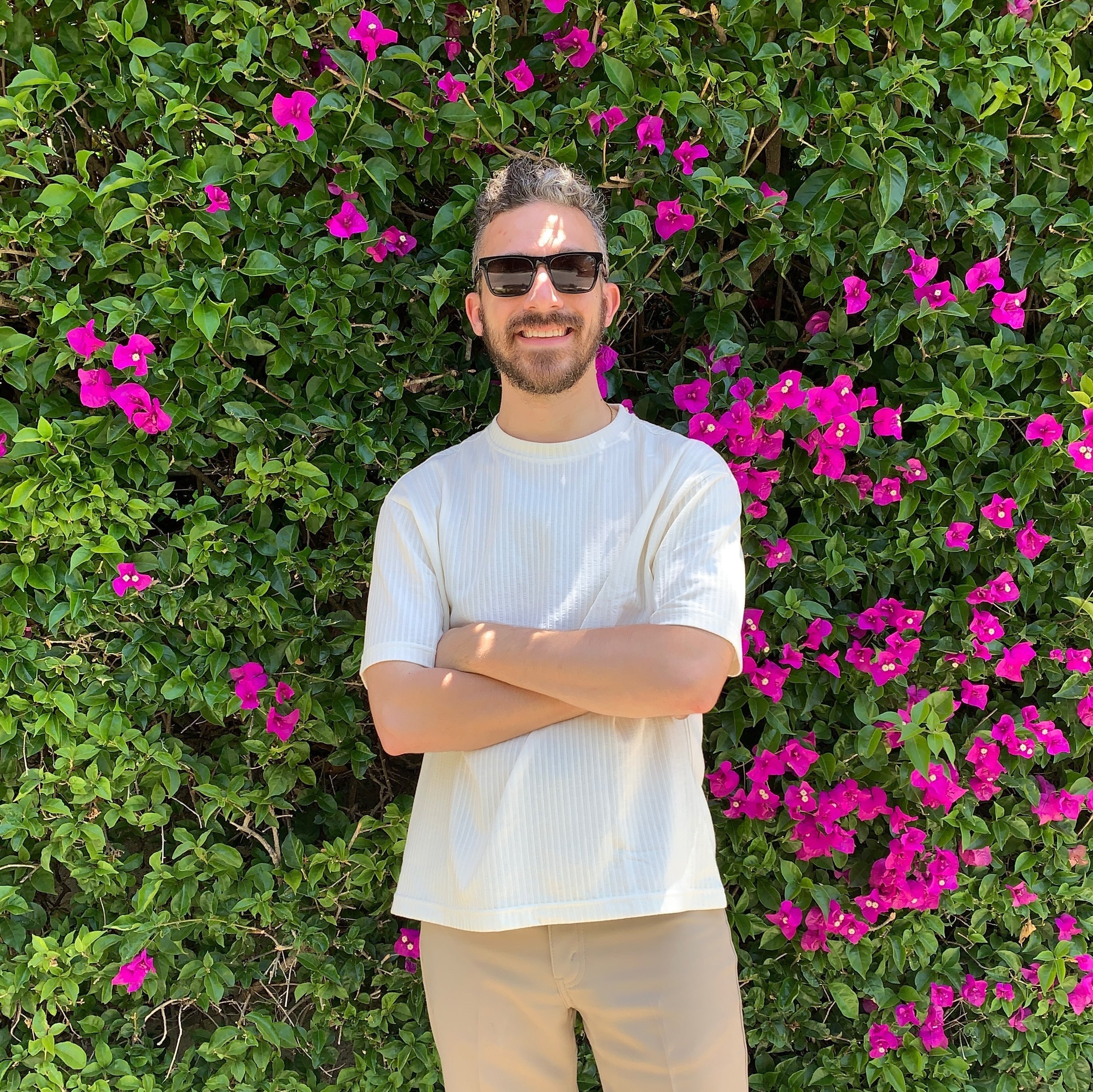[INTERVIEW] Innovative Label Co-Heads, Jozef White And RomanPang, Share Incite On Running Tabula Rasa And Its Debut Compilation 'Here & Now'
Even with the massive growth of electronic music over the last decade, there are still only a handful of industry professionals that strive to break sonic boundaries and challenge the norm. Founder of rising imprint Tabula Rasa Records, Jozef White, and his co-label head, RomanPang, have cemented themselves as this type of individual. Jozef forged the label and brand in February of 2020 to present a platform where creatives can experiment through music, tech, visual art, and more.
Now, he and RomanPang have rounded up a collective of forward-thinking artists to build Tabula Rasa's inaugural compilation, Here & Now. This groundbreaking project bridges a variety of genres and influences together, from UK garage and pop, to IDM (intelligent dance music) and techno. With such a monumental release taking place, we knew we had to get in touch with Jozef and RomanPang to learn more about Here & Now and Tabula Rasa as a whole.
Check out iEDM's exclusive interview with Jozef White and RomanPang below.

RomanPang (left) and Jozef White (right)
iEDM: Which artists did each of you look up to throughout your childhood? Is there a specific memory that comes to mind when thinking about how your passion for electronica was initially sparked?
RomanPang: I grew up around a lot of smooth jazz in my household growing up, but when I found out about experimental artists like Excision and Aphex Twin, I was hooked. I didn’t know that it was all considered techno/EDM until much later in life. I love when music tries to tear your face off.
I remember my dad walking in on me watching Aphex Twin’s “Come To Daddy” music video on YouTube, and he just looked so disgusted. He was so angry that he lectured me for two hours, which is about the length of an Autechre EP. I think nowadays if I caught one of my children listening to music I didn’t understand, I would introduce them to better music to flex on them.
Jozef White: My first real exposure to electronic music was in the fourth grade, when my teacher would play Daft Punk for us in the classroom. He also showed me how to use GarageBand which was pretty new at the time. That is probably the earliest moment I can trace this obsession to, which has only grown over the years.
iEDM: What was the biggest challenge you faced when launching Tabula Rasa and spreading its influence in the music scene? How have you managed to overcome this?
Jozef White: This one is a bit more of an unconventional obstacle—we have been releasing so much good music that it spreads itself, especially to the stranger corners of the internet. We had a fan who loved our music way too much. It was getting so out-of-hand that he came to me and Ramon’s houses and left demos at our doorsteps and in our mailboxes. We cannot say what happened from there since the case is still ongoing, but I am glad our families are safe now. It is why I’m a bit wary of people who say that music is their life.
RamonPang: I think the biggest obstacle was people taking us too seriously. There is a big stigma that older people who play experimental dance music and promote it have no sense of humor. I think it comes from most of them being more quiet on social media compared to more main-stage acts. The humor is just different—you see this a lot in Gen Z humor that makes no sense.
We have been getting a lot better at posting memes on our social media, especially really niche techno and IDM memes. I think Four Tet playing Country Riddim on the biggest stages in the world while wearing basketball shorts is one of the most important cultural moments of our time. That definitely helped change the way people perceive us.

iEDM: What is the most critical thing that each of you have learned during your journey to cultivate your signature style? How does this style or sound reflect who you are as an individual?
RamonPang: My personal sound as RamonPang just comes from living my life and listening to music very deeply. I think one of the best parts of listening to music is extracting what you love about it and interpreting it in your way. For example, in college I really wanted to learn how to become like Flume, but instead of delving into his music super deeply, I delved into his influences like Arca, Sophie, etc., and figured out what I liked about them.
This is a great skill to have—I can hear the material experimentation in Sophie, the love of experimental loops in Four Tet, and the ecclesiastical beauty in Illenium. Not only does it strengthen your appreciation of the music, it also deepens your personal knowledge. The more I learn, the more my style changes. In general though, I tend to learn toward music that is melodic and catchy, but also desperately experimental—this leans into how I curate for Tabula Rasa.
Jozef White: My personal sound has had considerably less time to mature and develop because of how much time and energy I have put into Tabula Rasa over the past almost half decade. Therefore, I won’t say much on that other than that it is meant to evoke those tiny, but crucially important moments of infinity. That feeling you get on a walk in the forest, for just a moment, where it all makes sense, or the sensation of being a part of a crowd at a concert, or laughing with the entire audience of a comedy show.
The signature style that is most important to me is that of Tabula Rasa itself. It carries echoes of my personal ethos but is more encompassing. It is imbued with the spirit of everyone who contributes to it, and the experimental soul of electronic music not just as a genre, but a way of approaching norms and the status quo. The degree to which this reflects my own personal philosophy is not accidental, but it also allows for room for it to be shaped by the vessel it is currently filling.
LOOKING FOR YOUR NEXT RAVE ADVENTURE?
CLICK TO CHECK OUT OUR 2023 FESTIVAL SCHEDULE FEATURING LINEUPS, DATES, AND LOCATIONS FOR EVERY FESTIVAL ACROSS NORTH AMERICA THIS YEAR!
iEDM: What were some of the top highlights from collaborating with the different artists on Here & Now and piecing it all together? How does the album encompass innovative and unprecedented sonic qualities?
RamonPang: It was interesting just watching all the combinations come together in fascinating ways. For example, Thys (of Noisia) brought such a rawness and dance-floor mentality to the futurism of Kelbin (they’re Italian). I was lucky to work with Gaszia (formerly of X&G) on this project. He and I have been friends for a few years at this point, and it is really fun to work with someone of his caliber and discuss high level topics like how to strengthen song ideas.
Putting together a strong compilation that represents the label was the most important part of this. We wanted to represent all the sides of Tabula Rasa through pure collaboration. I feel a common link between all the tracks on this album is that they have a sense of wonder and a braveness in them.
A lot of this album is dance music, which naturally means it is going to have some clichés and catchy, maybe-even cheesy moments. But there is such a love and care for using those tropes and twisting them in new ways that are still fun. Whether the tropes are EDM-based, UK-based, or from something else, there is a ton of playfulness and sincerity, which is what Tabula Rasa is all about.
iEDM: If you had to choose one word or phrase to describe Here & Now, what would it be and why?
RamonPang: Here
Jozef White: Now
iEDM: Can you break down the process of how the songs in Here & Now are ordered? Are they arranged based on telling a story, fitting a sonic theme, or other criteria?
Jozef White: We collected submissions for months and had a few hundred tracks to select from. Ramon and I spent several days together working on the selection process. I flew down to LA and we rented a hotel room where we were up for two days straight. During this time, we were listening through the submissions and taking detailed notes about the vibe of each track.
Everything we received for this was outstanding, but we wanted to convey a very particular energy; one which is almost impossible to put into words, but which perfectly reflects our current moment as a species, while also infusing this concept with a vision for what things could be.
RamonPang: When coming up with track-list drafts, we considered ordering the tracks by combined artist income level like other big compilations. We edited it down for clarity later. The first half of this compilation definitely feels a bit more clubby.
 iEDM: How are you able to find a balance between being a blank canvas where artists can express their visions and encompassing a central vibe for the label? What factors go into deciding if a track is a good fit for Tabula Rasa?
iEDM: How are you able to find a balance between being a blank canvas where artists can express their visions and encompassing a central vibe for the label? What factors go into deciding if a track is a good fit for Tabula Rasa?
RamonPang: I do not believe anything is truly a blank slate, especially an organization with a reputation and a following. We want artists that trust us and think that their art would be a good fit for whatever reason. No release is ever the same, but put simply—we know if it’s the TR (Tabula Rasa) sound when we hear it. I do not care for superficial things like low follower count, or how “bad” the mixdown is (whatever that means), or if the pitch is good. The TR and I staff look at everything, consider everything and talk to each other.
Jozef White: This is a great question, and here I will just include what I wrote for the inside cover of the physical release for Here & Now:
“Tabula Rasa is, at its core, a continuous and ever-evolving project where we ask: 'what if there is a better way?' It is not a movement of blank slatism per se; we have no desire to discard what we have learned, or deny where we came from. Rather, we want to acknowledge that in forging a better path forward, it is useful to remember that every day, one has the ability to wipe the slate clean and discard what is not working. Electronic music is centrally, but not exclusively, our medium.
The experimental soul, and playfulness of electronic music and the innate philosophy behind what drives it forward, is what drives Tabula Rasa. Since its inception, electronic music has been pushing conceptual boundaries, innovating and provoking questions as fundamental as inquiries into the nature of music itself.
We apply this same spirit to the concept of a record label itself. What is a record label? What does it do? What best serves artists? What assumptions about what record labels ought to be, can we discard? How can we play this game in a more harmonious way?
Tabula Rasa's Here & Now is our answer to some of these questions. It is the culmination of years of work, curiosity, and play. It brings together artists from across the world and with many different experiential backgrounds, with the intention, and ultimate result of capturing this particular moment with all of its best qualities, which only reveal themselves in greater detail the closer you pay attention.”
iEDM: What are you most looking forward to in regard to your upcoming release party for Here & Now? What would you like potential attendees to know surrounding the event?
RamonPang: I am greatly looking forward to meeting everyone in the New York community in general. I have not been back in ten years, and that was before I started pursuing music. It is going to be really cool to meet all these artists I have been talking to online for years.
Attendees should come open-minded, prepared to experience the vibes of Tabula Rasa! It’s dance music, it’s supposed to be fun. For a lot of these young artists, it is their first time playing live ever, so you are going to be getting a once-in-a-lifetime experience.
Get tickets to Tabula Rasa's Here & Now Release Party HERE!
iEDM: What are your biggest goals for Tabula Rasa to achieve by 2025? How do you plan on accomplishing these objectives?
Jozef White: By 2025 we are looking to expand beyond just music, and into much higher margin industries in order to keep the label from running at a loss, even as we start to invest hundreds of thousands of dollars into each release. Often what happens with art is that it is very easily influenced and sometimes even corrupted by capital influences.
Take Jeff Koons for example, one of the most skilled artisans of our day, and perhaps bronze workers of all time, reduced to making mummified shiny objects for a culture that cannot bear to look at a statue for longer than a few seconds unless it is a marvel character or balloon animal. This is why our goal is to build scalable industries around the label in order that the art stays as true to form as possible.
iEDM: Are there any upcoming projects for Tabula Rasa that you can hint at for your fans to get excited about?
Jozef White: Fans can get really excited about everything that we have on the way, for the simple fact that we are completely beyond excited. We believe that we are only truly as good as what we release next, and we use this mantra to avoid stagnation and to keep from getting bored.
We will never be confined to a single genre, external image, sound or brand, but the mark of Tabula Rasa will be known when it is seen and heard in the ways in which people react to what we release.

Photos courtesy of Tabula Rasa, Jozef White, and RomanPang


















